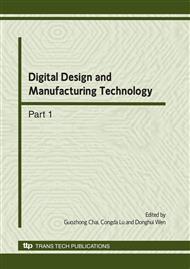p.781
p.786
p.791
p.796
p.801
p.807
p.813
p.817
p.822
Study on Conversion of Customer Needs in Product Development
Abstract:
In order to translate the Customer Needs (CN) for the specific product into the right Technical Requirements (TR), the structure of conventional House of Quality (HOQ) is modified to have HOQ fit in with the needs of multi-attribute decision-making. Then, an Objective Programming Model (OPM) based on HOQ is constructed, which fully considers the design team's experience, and the interdependence between CN and TR, and the inner-dependences within themselves, along with resource limitations, and multi-objective nature of the problem. The target values of TR are obtained by solving the OPM using MATLAB, which can fully meet the CN. Finally an example is given, and the OPM is proved to be reasonable and effective.
Info:
Periodical:
Pages:
801-806
Citation:
Online since:
March 2010
Authors:
Price:
Сopyright:
© 2010 Trans Tech Publications Ltd. All Rights Reserved
Share:
Citation:


